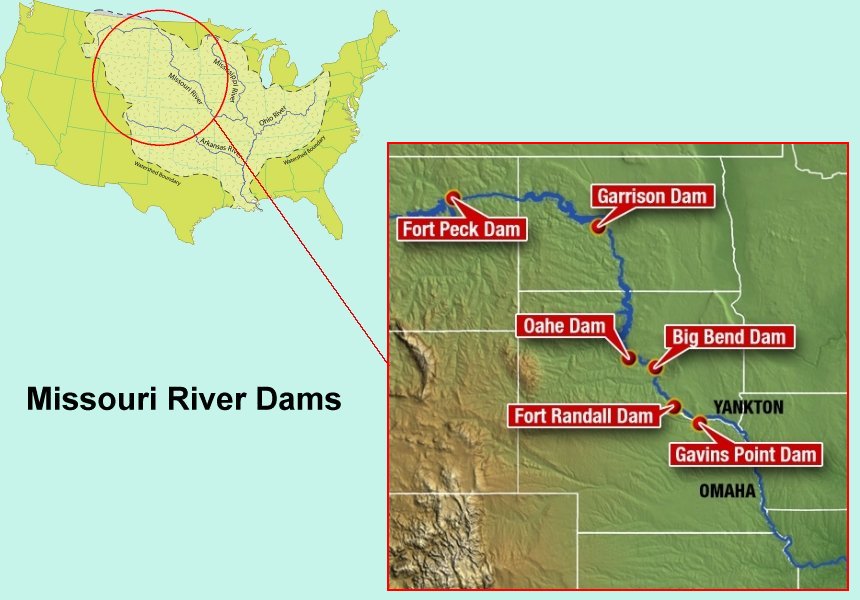
The six Missouri River dams, started in 1933 and completed in 1964, were built primarily through the Pick-Sloan Program, a Bureau of Reclamation and Corps of Engineers compromise for developing the Missouri River. The dams are located in the upper portion of the Missouri River and were built primarily to store water for hydroelectric power generation, irrigation and recreational uses within made-made reservoirs. Photos of the Fort Peck Dam and Gavins Point Dam are shown below in Figure 1.
Missouri River Authorized Purposes
The management of the dams through water releases within the system and into the lower portion of the river
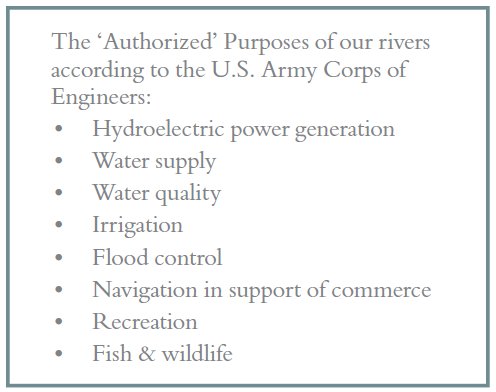 |
are governed by the US Army Corps of Engineers’ Master Manual document. It is intended to attempt to balance water usage within the system for the eight Authorized Purposes established in 1944.
In 2009 an attempt was made to update the 65 year old river priorities through the Missouri River Authorized Purposes Study: (MRAPS). Unfortunately, Missouri legislators defunded the study before it was completed.
River Water Management
The water volume within the Missouri River system can vary from year to year due to interactive climactic conditions including the level of precipitation, the snow pack, and temperatures. Each of the reservoirs, see Figure 2 below, is unique including the volume of water each can hold . It requires a delicate balance of complex and conflicting demands to manage the river’s water.
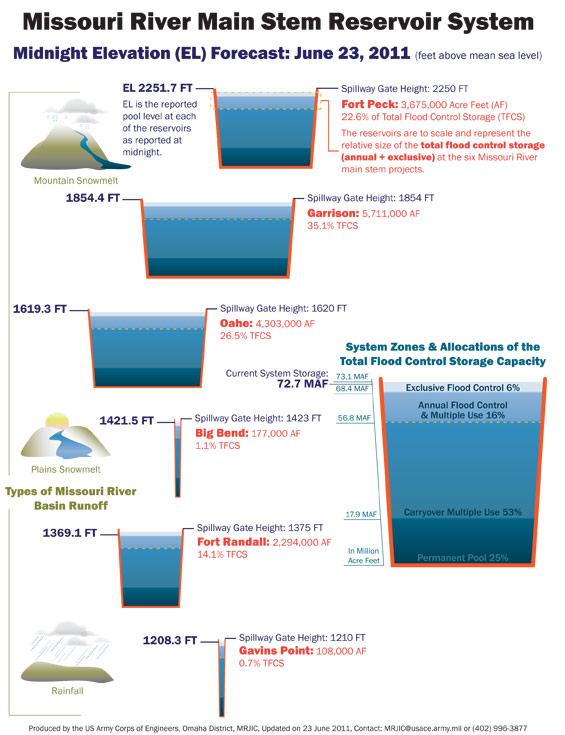 |
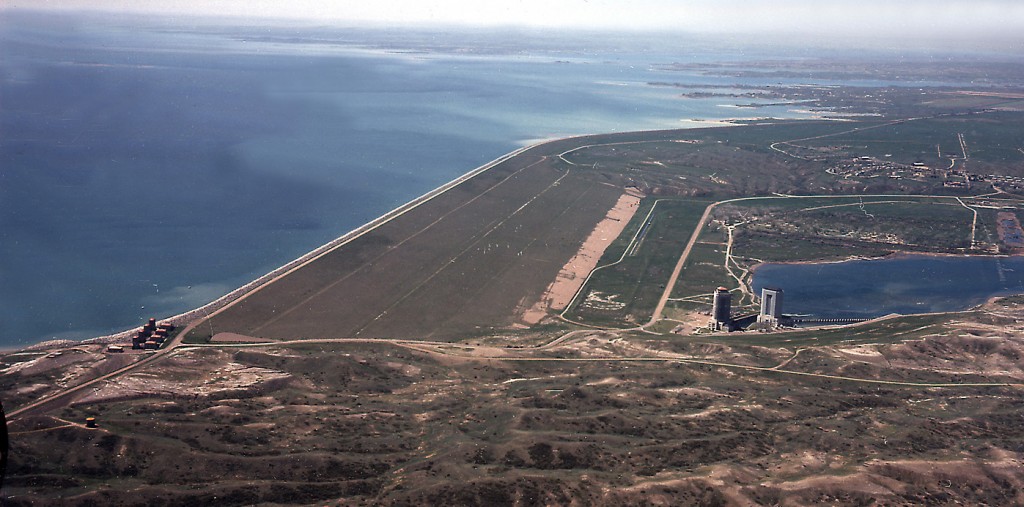 |
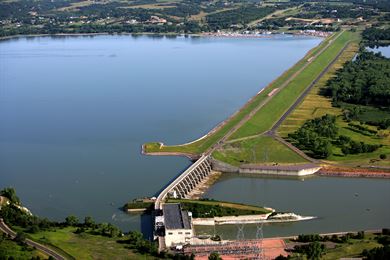 |
